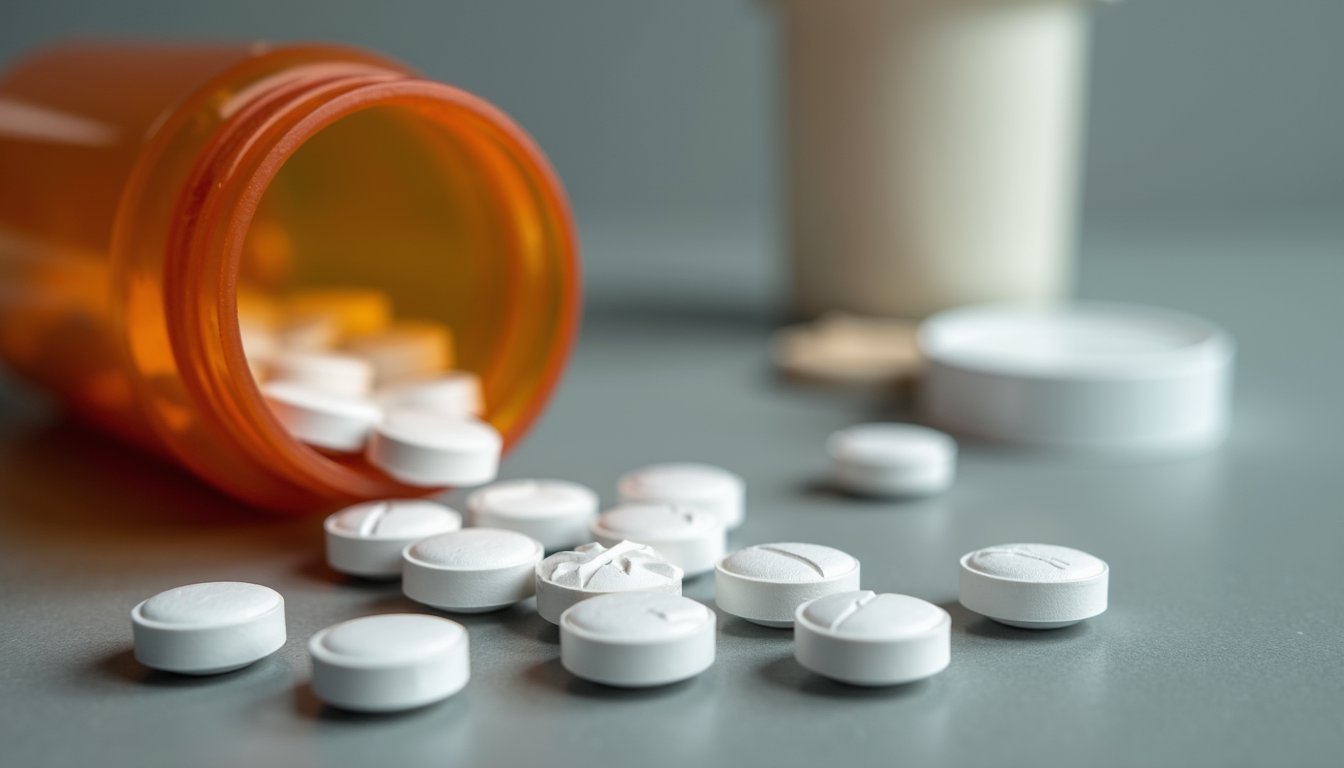Key Points
- Infant Risk Through Breastmilk: Even small amounts of Xanax can be passed to an infant through breastmilk, potentially causing sedation, feeding difficulties, and long-term developmental concerns.
- High Overdose Potential: Using Xanax outside of prescription guidelines or mixing it with other depressants greatly increases the risk of Xanax overdose, which can be fatal if untreated.
- Severe Withdrawal Dangers: Abruptly stopping Xanax can trigger severe Xanax withdrawal symptoms, including seizures and extreme anxiety, underscoring the need for professional supervision.
- Inpatient Medically Assisted Rehab: Round-the-clock medical care in an inpatient setting is the most reliable and effective path to detox from Xanax and rebuild a healthier life.
- Expert Support at Simonds Recovery Center: From individualized treatment plans to aftercare, Simonds Recovery Center delivers comprehensive, empathetic care tailored to every patient’s unique needs.
Introduction
Xanax, known generically as alprazolam, is a benzodiazepine commonly prescribed for anxiety disorders and panic attacks. Because of its sedative properties, Xanax can be effective at reducing symptoms such as intense worry or panic in the short term. However, it is also known to be habit-forming and can lead to dependence, abuse, and dangerous side effects when not used as directed. This is particularly concerning for new or expectant mothers who may be prescribed—or who consider taking—Xanax while breastfeeding.
Motherhood brings many challenges, including hormonal fluctuations and increased stress or anxiety. Even though some healthcare professionals may explore prescribing benzodiazepines in specific circumstances, it is essential to understand the potential risks to both the mother and infant. When a substance like Xanax is abused or used without proper medical oversight, it can have serious ramifications, especially while breastfeeding.
This article provides in-depth information about the risks associated with Xanax while breastfeeding, its potential effects on the nursing infant, and important details about Xanax overdose and withdrawal. We will also discuss why inpatient medically assisted rehab is an effective solution for managing addiction and how Simonds Recovery Center can be a vital resource for those seeking help. Finally, we will offer answers to commonly asked questions concerning Xanax and breastfeeding.
Reclaim Your Life from Xanax Addiction Today
Contact us now to begin your path toward lasting recovery
The Dangers of Using Xanax While Breastfeeding
How Xanax Interacts with Breastmilk
Medications ingested by the mother can pass through breastmilk to the nursing infant, sometimes in small but significant amounts. For a potent benzodiazepine like Xanax, even minimal exposure may result in side effects for an infant. Infants have underdeveloped metabolism and organ systems, meaning they are less capable of processing medications effectively [1]. Consequently, Xanax passing into breastmilk can accumulate in the baby’s system, leading to harmful side effects.
Potential Risks to Infants
- Sedation and Drowsiness: One of the hallmark side effects of Xanax is sedation. For an infant receiving the medication through breastmilk, excessive drowsiness can interfere with normal wakefulness, feeding schedules, and developmental milestones.
- Feeding Difficulties: Sedation in infants can impede their ability to latch or suckle properly, leading to nutritional deficits, dehydration, or weight loss [2].
- Respiratory Depression: In severe cases, benzodiazepines can cause respiratory depression, a potentially life-threatening slowing of the breathing rate. Infants are especially vulnerable to this risk if the dosage in breastmilk is high.
- Developmental Impact: Over time, repeated exposure to Xanax through breastmilk could contribute to cognitive and developmental delays, although more research is needed to fully quantify this risk.
It is worth emphasizing that the dangers of Xanax are not limited to direct administration. Even if a mother takes the drug in recommended doses, the potential for adverse effects in infants remains a concern, prompting many experts to advise more cautious or alternative treatments for nursing mothers.
Reclaim Your Life from Xanax Addiction Today
Contact us now to begin your path toward lasting recovery
Xanax Overdose: Recognizing the Signs and Seeking Help
Misusing Xanax—or using it longer than prescribed—can increase the risk of overdose. This can occur when someone takes more than the recommended dosage or combines Xanax with other central nervous system depressants (e.g., alcohol or opioids). Xanax overdose is a critical medical emergency that can lead to coma or death if not immediately addressed.
Signs of Overdose
- Extreme Drowsiness or confusion that significantly impairs alertness.
- Slowed Breathing: Shallow, erratic, or dangerously slow respiratory patterns.
- Loss of Coordination: Stumbling, difficulty walking, or inability to maintain balance.
- Unresponsiveness: In severe cases, the individual may lose consciousness.
- Bluish Tint to Skin: Especially around lips and fingertips, signaling oxygen deprivation.
Risk Factors for Overdose While Breastfeeding
- Stressful Circumstances: Anxiety, postpartum hormonal changes, or depression can lead some mothers to take more medication than recommended, hastening the path to overdose.
- Polysubstance Use: Combining Xanax with other substances like opioids or alcohol can exacerbate its depressant effects [3].
- Lack of Medical Oversight: Using Xanax without consistent medical check-ups or outside of a prescribed regimen increases the likelihood of misuse.
When an overdose occurs, immediate medical intervention is critical. If a breastfeeding mother overdoses on Xanax, the risk extends not only to her health but also to her infant, who may already be exposed to the drug through breastmilk.
Understanding Xanax Withdrawal
Xanax withdrawal is a condition that arises from a sudden discontinuation or reduction in dosage after a period of regular Xanax use. Benzodiazepines like Xanax work on the brain’s GABA receptors to create a calming effect. Over time, the body becomes dependent on these chemical effects, making abrupt cessation challenging and potentially dangerous.
Symptoms of Withdrawal
- Anxiety and Restlessness: A rebound effect of the anxiety symptoms Xanax was initially prescribed to manage.
- Insomnia: Withdrawal can disrupt sleep patterns, making it difficult to achieve restful sleep.
- Irritability and mood swings, sometimes severe.
- Muscle Tension and tremors, indicating the body’s internal state of distress.
- Seizures: In extreme cases, abrupt cessation of benzodiazepines can trigger seizures, underscoring the need for medical supervision [4].
Why Medically Assisted Detox is Crucial
Withdrawal from Xanax should be carried out under the watchful supervision of medical professionals, particularly for individuals who have been using it for an extended period or in high doses. Inpatient medically assisted rehab programs offer the advantage of 24/7 medical monitoring, ensuring any complications can be quickly managed.
Medication-assisted treatment may include a gradual tapering off of Xanax or the use of other benzodiazepines under strict regulation to minimize withdrawal symptoms and reduce risks. The primary objective is to stabilize the individual while preventing severe complications like seizures or psychological crises.
Reclaim Your Life from Xanax Addiction Today
Contact us now to begin your path toward lasting recovery
Why Inpatient Medically Assisted Rehab Is the Best Solution
Comprehensive Assessment
A key aspect of inpatient medically assisted rehab is a comprehensive health assessment upon admission. Medical professionals measure vital signs, evaluate mental health status, and screen for other substance use disorders. This thorough intake process ensures that all underlying issues are identified for optimal treatment planning.
24/7 Medical Monitoring
In an inpatient setting, patients have constant access to medical professionals trained to address complications related to withdrawal, overdose, or co-occurring mental health issues. This can make a lifesaving difference for individuals at high risk of severe withdrawal symptoms [5].
Structured Environment
Inpatient programs remove daily triggers and stresses, creating a more controlled environment where a person can focus on recovery. This structure is vital for individuals who have repeatedly relapsed in less controlled settings or who face challenging home environments that hinder sobriety.
Tailored Treatment Approach
Therapy and counseling are key components of inpatient rehab. Professional counselors, therapists, and psychiatrists work in tandem to address the psychological, emotional, and behavioral aspects of addiction. Evidence-based approaches such as Cognitive Behavioral Therapy (CBT) or group therapy are commonly used to equip individuals with coping mechanisms for long-term recovery.
Relapse Prevention
Relapse prevention strategies are also woven into inpatient treatment. Patients learn to identify their triggers, manage stressors, and build support networks. This training is crucial when transitioning from a controlled environment back into daily life. Aftercare plans often include follow-up appointments, therapy sessions, and support groups to help maintain sobriety and reduce the risk of relapse.
How Simonds Recovery Center Can Help
Simonds Recovery Center offers a specialized approach to helping individuals overcome substance misuse, particularly when it comes to benzodiazepines like Xanax. Their comprehensive programs focus on each patient’s unique situation, ensuring a path toward sustained sobriety. Here’s how they provide critical support:
- Individualized Treatment Plans: Recognizing that every person has a unique story, Simonds Recovery Center customizes plans to address individual needs, underlying mental health conditions, and personal recovery goals.
- Medically Assisted Detox: Detoxification is often the first step in overcoming Xanax dependence. The Center’s medical team ensures that patients withdraw safely, minimizing risks such as seizures and severe anxiety.
- Therapy and Counseling: In addition to medical care, Simonds Recovery Center provides individual and group therapy sessions aimed at uncovering the root causes of addiction. By addressing emotional and psychological issues, patients can learn healthier coping strategies for stress and anxiety.
- Strong Community Support: Recovery is not just about medical supervision; it is also about compassion and empathy from a supportive community. The Center fosters an environment where patients encourage each other, share experiences, and build resilience.
- Aftercare Planning: Recovery is a lifelong process. Simonds Recovery Center ensures that when patients transition out of the inpatient setting, they have the resources, follow-up appointments, and peer-support networks needed for continued success [6].
For mothers or anyone in the postpartum phase, specialized care can be arranged to address the specific challenges of balancing recovery with family responsibilities. The professional team at Simonds Recovery Center understands these nuances and aims to offer compassionate, individualized care.
Reclaim Your Life from Xanax Addiction Today
Contact us now to begin your path toward lasting recovery
Frequently Asked Questions (FAQs)
1. Can I Still Breastfeed If I Have Taken Xanax?
It is crucial to consult a healthcare provider before making any decision about medication use while breastfeeding. Because Xanax can pass into breastmilk, your doctor may recommend tapering off the drug or switching to a safer alternative. Abruptly stopping Xanax can lead to withdrawal; therefore, medical supervision is strongly advised.
2. How Do I Know If My Baby Is Being Affected by Xanax in My Breastmilk?
Signs of potential effects include excessive sleepiness, feeding difficulties, irritability, or lethargy. If you suspect your baby is affected, contact your pediatrician or healthcare provider immediately for an evaluation.
3. What Should I Do If I Suspect a Xanax Overdose?
Xanax overdose is a medical emergency. Call emergency services immediately. If you or someone around you is unconscious, experiencing severe confusion, or showing significant respiratory depression (e.g., slowed or irregular breathing), immediate medical intervention is crucial.
4. Is Inpatient Rehab Necessary for Xanax Addiction?
While various treatment paths exist, inpatient medically assisted rehab is generally considered the most comprehensive option for those struggling with Xanax addiction, particularly if they are at high risk for severe withdrawal symptoms or relapse. Inpatient care offers constant medical oversight, therapy, and relapse prevention strategies.
5. Can Simonds Recovery Center Help with Co-Occurring Mental Health Disorders?
Yes. Simonds Recovery Center has experience treating co-occurring disorders such as anxiety, depression, and other mental health issues that may contribute to substance misuse. Their integrated approach ensures that both conditions are addressed concurrently, improving the likelihood of a successful recovery.
Reclaim Your Life from Xanax Addiction Today
Contact us now to begin your path toward lasting recovery
Final Thoughts
Using Xanax while breastfeeding presents significant risks to both the mother and baby. As Xanax can pass into breastmilk, newborns can be exposed to potentially harmful amounts that affect their central nervous system, feeding, and overall development. For those who have developed a dependence on Xanax or are struggling with misuse, the possibility of Xanax overdose adds yet another layer of urgency, as overdose can be life-threatening if not treated immediately.
Equally concerning is the challenge of Xanax withdrawal, which can manifest in severe physical and psychological symptoms. Attempting to quit abruptly without medical guidance can result in seizures and other life-threatening complications. Therefore, medically supervised detox—preferably in an inpatient medically assisted rehab setting—remains the safest and most effective route. In such settings, individuals benefit from thorough assessments, personalized treatment plans, 24/7 medical monitoring, and evidence-based therapies that address both addiction and underlying mental health issues.
Simonds Recovery Center offers a holistic approach designed to meet the specific needs of each individual, including mothers coping with postpartum challenges. By placing patients in a supportive, structured environment, they can focus entirely on recovery and receive medical attention that ensures safe detoxification. Beyond the acute recovery phase, Simonds Recovery Center’s commitment to aftercare planning supports lasting sobriety and a healthier, substance-free life.
For those grappling with Xanax use—especially new mothers concerned about the impact on their child—seeking professional help is critical. Reach out to healthcare professionals and addiction specialists who can guide you or your loved one toward effective treatment and a renewed sense of hope. Recovery is within reach, and the safest path forward involves informed decision-making, professional support, and comprehensive care.
References
[1] Substance Abuse and Mental Health Services Administration (SAMHSA). https://www.samhsa.gov/
[2] U.S. Food and Drug Administration (FDA). https://www.fda.gov/
[3] Centers for Disease Control and Prevention (CDC). https://www.cdc.gov/
[4] National Institute on Drug Abuse (NIDA). https://nida.nih.gov/
[5] Office on Women’s Health (womenshealth.gov). https://www.womenshealth.gov/
[6] National Institutes of Health (NIH). https://www.nih.gov/
Reclaim Your Life from Xanax Addiction Today
Contact us now to begin your path toward lasting recovery





